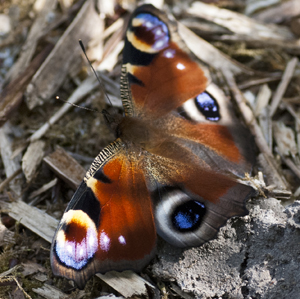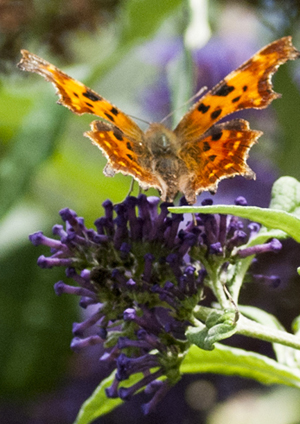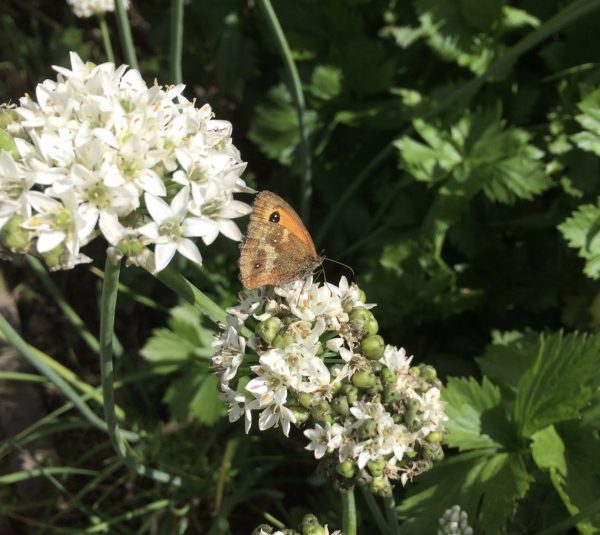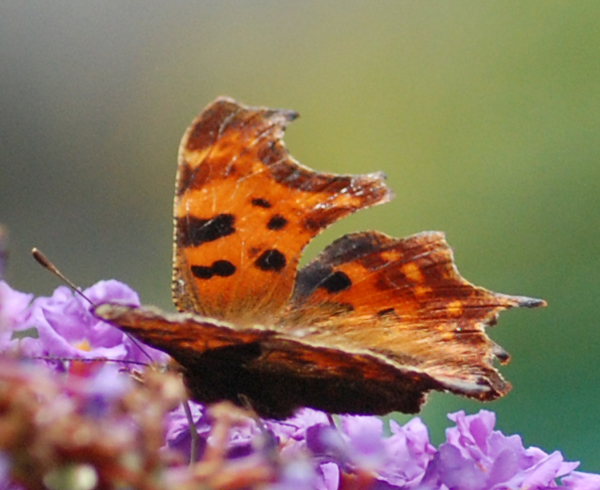Counting butterflies

The British have always been inclined to talk about the weather “it's been too hot, too cold, been raining for days etc”. However, there is now some justification for discussing the weather as recent years have seen the number of extreme weather events increasing and there have been significant changes in the ‘pattern of the weather”.
Though not extreme, the weather this Spring and early Summer has been been disappointing. Sleet and snow fell in late April, and there were a number of sharp frosts. The April temperature was 6.5o C, 0.9o C below the 20 year long term average. Most regions were colder and wetter. This pattern continued into June. This sort of weather, when coupled with last year’s rather cold , wet summer has significant effects on both insect and bird populations.
 If it is cold and wet butterflies are not able to fly. Consequently they cannot disperse, fed, or establish territory. As all of these activities are limited, the number of eggs laid is reduced. If and when the eggs hatch, the caterpillars grow more slowly and are more likely to be eaten by predators or succumb to disease.
If it is cold and wet butterflies are not able to fly. Consequently they cannot disperse, fed, or establish territory. As all of these activities are limited, the number of eggs laid is reduced. If and when the eggs hatch, the caterpillars grow more slowly and are more likely to be eaten by predators or succumb to disease.
There are some butterflies that seem to cope better with the cold and wet but these are species associated with northern and upland Britain - such as the Mountain Ringlet. However, even these butterflies need some sunny and warm days in order to complete their courtship and reproduce. Too hot and too dry is also bad for butterflies, as the plants on which their caterpillars fed - die. Thus, the summer of 1976 was hot and dry, and there were butterflies flying around; but the next year butterfly populations crashed as the caterpillars that hatched in the long, hot summer had little to fed on. Further detail of recent research and surveys can be found on the BBC site here.
In order to determine what is happening to our butterfly populations, the Big Butterfly Count is again underway. To join in with big butterfly count this summer, all that you need to do is simply count butterflies for 15 minutes during bright (preferably sunny) weather sometime during the period 15th July to 7th August. Sightings can be logged at the website until the end of August, or you can use the smart phone app (for Ios here or android here ). Sightings from parks, school grounds and gardens, to fields, woodlands and forests are valuable – they all help to build a picture of butterfly (and moth) populations.

Photo : Courtesy of Pam Symons

Comments are closed for this post.
Discussion
This weekend looking more hopeful for butterfly counting!

[…] results of this year’s Big Butterfly Count are now available online and are discussed here : […]
The Big Butterfly Count – Results 2016 | Woodlands.co.uk
10 October, 2016